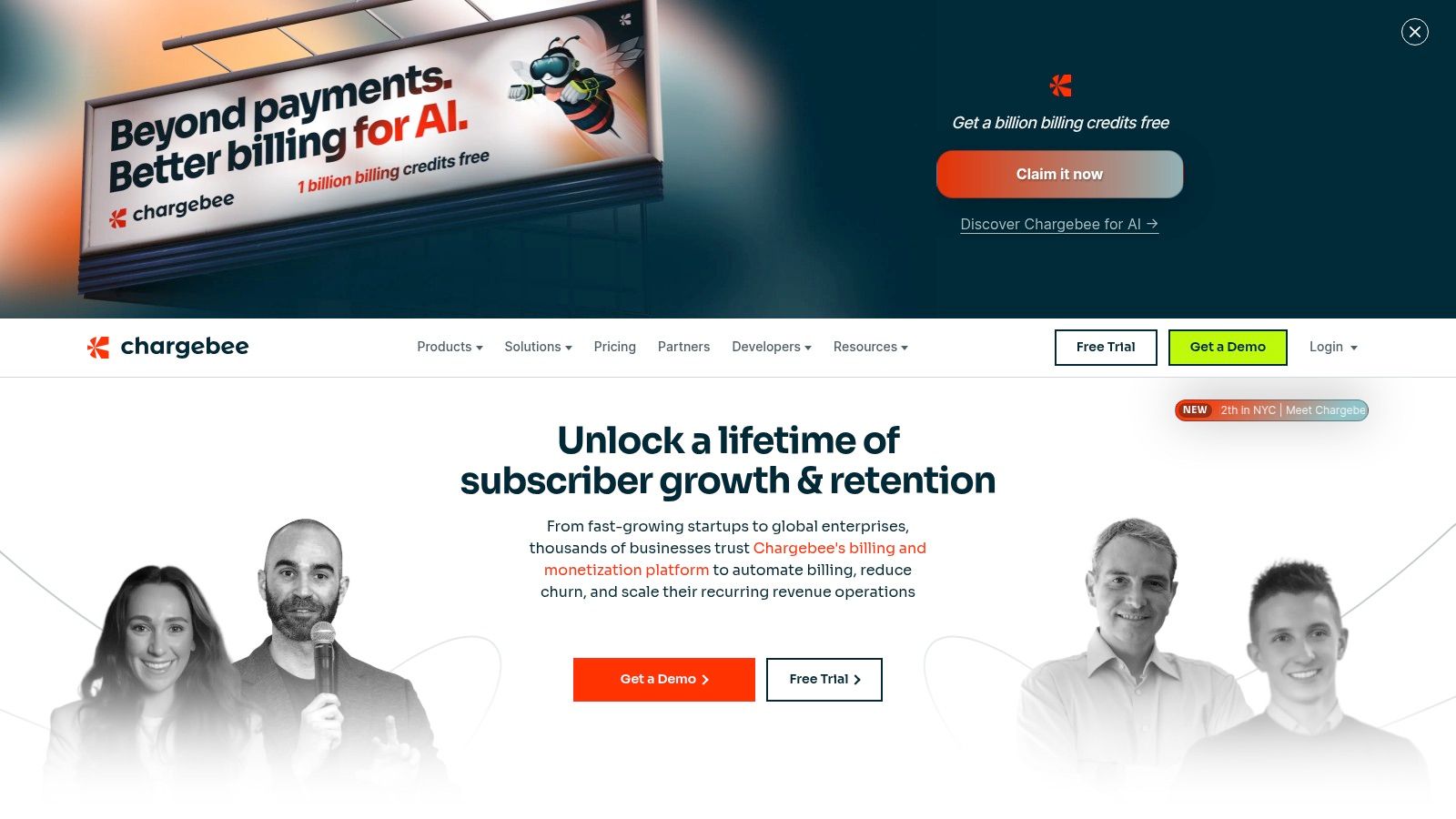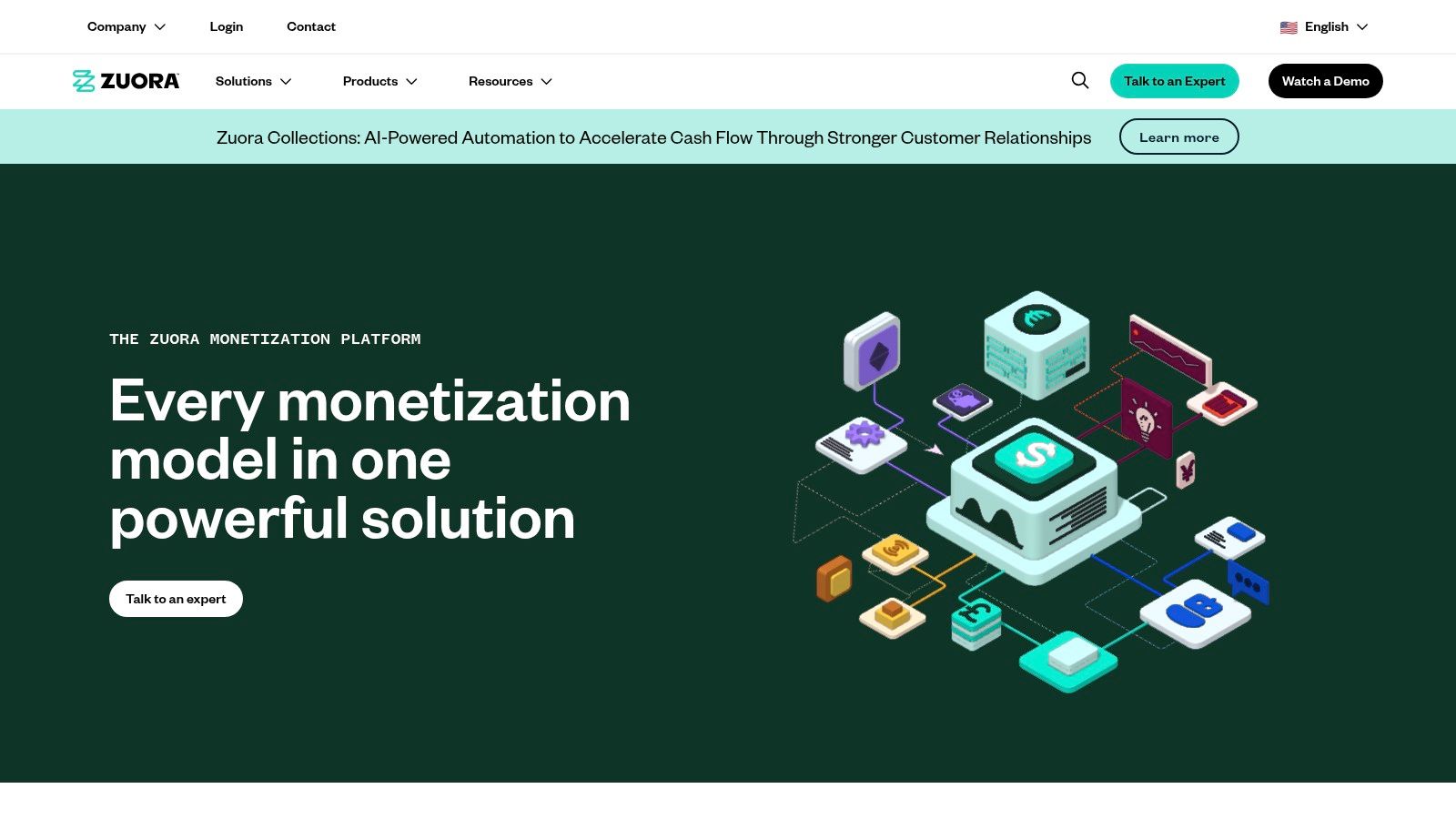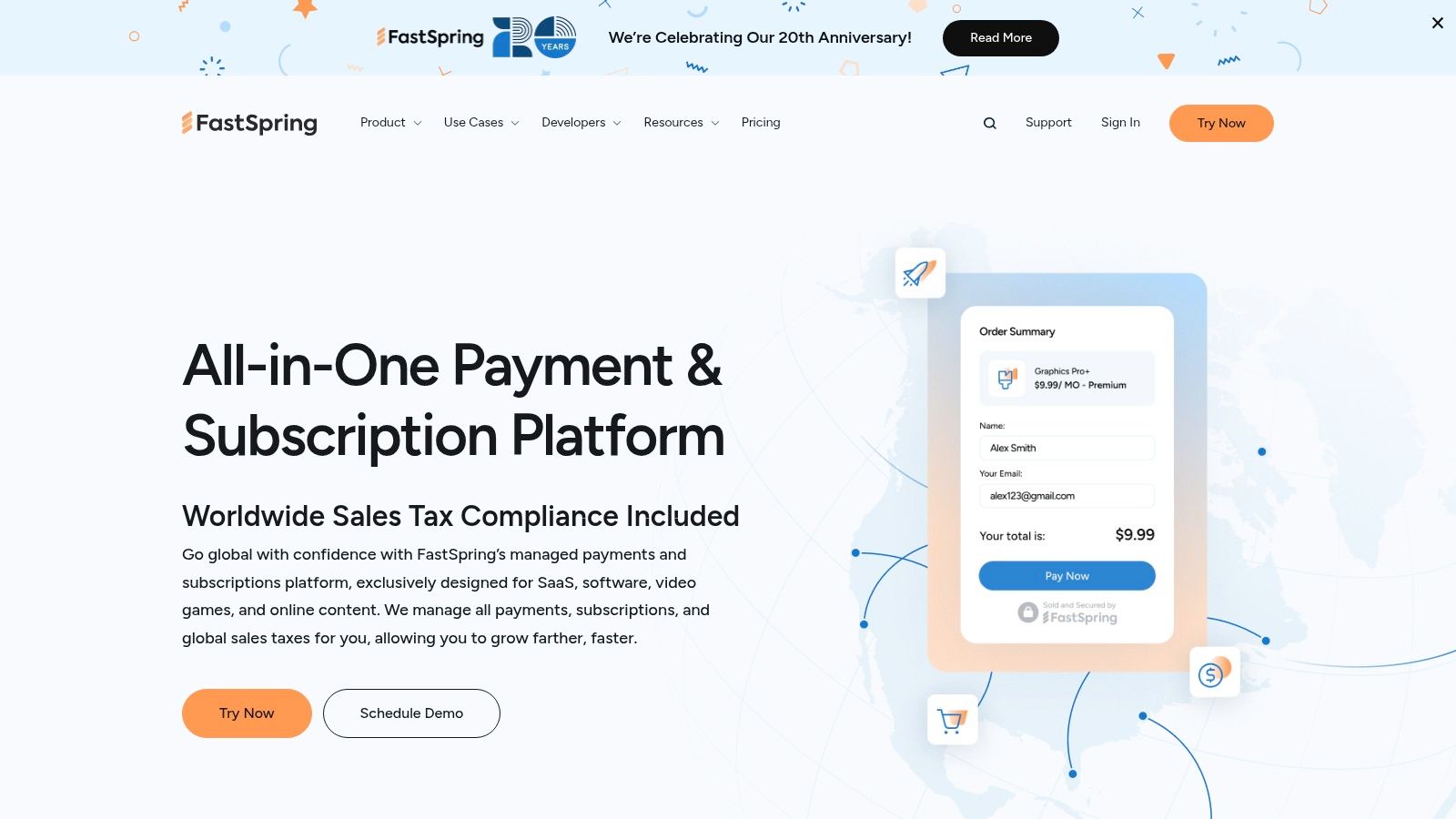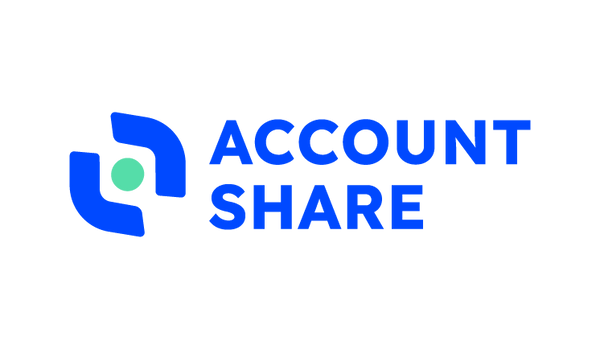
Top Subscription Management Platforms to Boost Your Business
Share
Level Up Your Subscription Game
Juggling multiple subscriptions? Reclaim control and optimize your spending with the right subscription management platform. This listicle explores eight leading platforms—AccountShare, Stripe Billing, Chargebee, Recurly, Zuora, Paddle, RevenueCloud by Salesforce, and FastSpring—to simplify your subscription management. Discover which platform best fits your needs, whether you're a tech-savvy individual, family, small business, student, or digital nomad looking to efficiently manage and potentially reduce subscription costs.
1. AccountShare
AccountShare distinguishes itself as a leading subscription management platform by addressing the growing need for affordable and secure access to premium digital services. Unlike traditional subscription models where users pay individually, AccountShare leverages the power of group buying to significantly reduce costs for popular services. This innovative approach makes it a compelling solution for tech-savvy individuals, families, students, and small businesses seeking to optimize their digital spending. It’s particularly useful for managing multiple subscriptions and ensuring secure access for all authorized users, effectively acting as a centralized subscription management platform. This unique blend of cost savings and enhanced control earns AccountShare a prominent position on this list of top subscription management platforms.

For families tired of juggling multiple streaming subscriptions, AccountShare offers a streamlined solution. Imagine sharing a single Netflix, Spotify, or even gaming accounts like Xbox Game Pass without the hassle of shared passwords or login issues. AccountShare’s customizable permission settings allow parents to control access and ensure age-appropriate content, effectively turning it into a family-friendly subscription management platform. Students, often on tight budgets, can benefit immensely from sharing the cost of essential software, online learning platforms, and even AI tools like ChatGPT Plus or Claude Pro. AccountShare empowers them to access crucial resources without breaking the bank. Small businesses, too, can leverage AccountShare to reduce operational costs. Sharing subscriptions for project management software, design tools, or CRM platforms becomes secure and straightforward, allowing them to invest saved resources elsewhere. Even digital nomads can benefit from the platform’s efficient account management features and stable access, ensuring uninterrupted service regardless of their location.
AccountShare’s key strength lies in its ability to provide priority access and faster response times, even during peak demand. This is a significant advantage over managing individual subscriptions, where users might experience slowdowns or limited availability. The platform boasts robust security features, including password sharing functionalities within the group and customizable permissions, addressing potential privacy concerns associated with shared accounts. This makes AccountShare a secure subscription management platform, ensuring peace of mind for users. Pricing starts around $10 per popular subscription and varies depending on the service and the size of the group, offering a cost-effective alternative to individual plans. For example, a family of four sharing a Netflix premium subscription through AccountShare could potentially save hundreds of dollars annually compared to individual subscriptions.
Setting up an account on AccountShare is straightforward. Users create a profile, select the services they want to share, and invite group members. The platform handles the technical aspects of managing access and payments, simplifying the entire process. While the platform’s pricing and availability depend on the specific service and group size, AccountShare’s customer service team is known for its responsiveness, readily addressing user queries and providing support.
However, like any shared service, AccountShare necessitates some coordination among group members. Users need to establish clear usage guidelines and communication protocols to avoid conflicts. While this might require some initial effort, the long-term cost savings and convenience often outweigh the minor inconvenience. Another factor to consider is that the availability of specific services and the final pricing are dependent on the group size and the service itself. Potential users should check the AccountShare website (https://accountshare.ai) for the most up-to-date information regarding service offerings and pricing.
In conclusion, AccountShare redefines subscription management by providing a secure, cost-effective, and efficient platform for sharing premium digital services. Its unique blend of group purchasing power, enhanced security features, and responsive customer support positions it as an invaluable tool for individuals, families, and businesses alike seeking to optimize their digital lives without overspending. While requiring some group coordination, the benefits of significantly reduced subscription costs, priority access, and streamlined account management make AccountShare a standout choice in the increasingly crowded subscription management platform landscape.
2. Stripe Billing
Stripe Billing is a powerful and highly customizable subscription management platform designed to automate recurring billing, invoicing, and the entire subscription lifecycle. Built upon Stripe's robust payment infrastructure, it offers a comprehensive suite of tools ideal for businesses of all sizes, from startups to large enterprises, seeking to manage subscription services with flexible pricing models, automated dunning management, and in-depth analytics. This platform stands out for its ability to handle complex billing scenarios, including usage-based pricing, tiered subscriptions, and proration, making it a versatile solution for a wide range of businesses. Whether you're offering software as a service (SaaS), online courses, subscription boxes, or any other recurring service, Stripe Billing provides the tools to streamline your operations and optimize revenue.

One of Stripe Billing's key strengths lies in its flexibility. It supports various pricing models, including flat-rate subscriptions, tiered plans based on usage or features, and usage-based pricing where customers are charged based on their consumption. This adaptability makes it suitable for businesses with evolving pricing strategies or those offering multiple subscription tiers. The platform also excels in its dunning management capabilities, automating the process of retrying failed payments and minimizing involuntary churn. Through customizable email notifications and retry schedules, businesses can recover lost revenue and improve customer retention. Furthermore, Stripe Billing's comprehensive analytics dashboard provides valuable insights into key subscription metrics like recurring revenue, churn rate, and customer lifetime value, empowering businesses to make data-driven decisions and optimize their subscription strategies.
Stripe Billing shines in its technical capabilities, particularly its developer-friendly APIs. These APIs allow for deep integration with existing systems and enable developers to customize the billing experience to match their specific needs. This is especially beneficial for businesses seeking a tailored solution that seamlessly integrates with their existing infrastructure. For example, a SaaS company can leverage the APIs to automate user provisioning and de-provisioning based on subscription status. Similarly, an e-commerce platform can integrate Stripe Billing to offer subscription options for certain products.
For tech-savvy individuals, families, small businesses, students, and digital nomads, Stripe Billing offers a robust solution for managing multiple subscriptions, albeit indirectly. While Stripe Billing is primarily a B2B service, it powers the subscription management systems of many platforms these individuals use. Its robust infrastructure ensures secure and reliable payment processing, simplifying subscription management for end-users. Businesses using Stripe Billing can offer seamless subscription experiences, including easy sign-up, flexible payment options, and clear billing information.
While Stripe Billing boasts many advantages, there are some considerations. Its comprehensive features and API-driven customization require technical expertise for full implementation. Businesses without dedicated development resources might find the initial setup challenging and may need to invest in developer support. While Stripe offers excellent documentation and support, a certain level of technical proficiency is required to harness the platform's full potential. Additionally, while Stripe Billing handles the core aspects of subscription management efficiently, its built-in customer portal functionality is relatively limited compared to some competitors. Businesses requiring a more feature-rich customer portal might need to integrate third-party solutions or build their own. Finally, Stripe's tiered pricing structure, while transparent, can become expensive for high-volume businesses processing a large number of transactions.
Stripe Billing operates on a tiered pricing structure based on transaction volume. Specific pricing details can be found on their website (https://stripe.com/billing). The platform's transparent pricing model ensures no hidden fees or setup costs, making it easier for businesses to predict and manage their expenses.
Implementing Stripe Billing requires technical integration via its APIs. While the documentation is comprehensive, businesses should allocate sufficient development resources and time for proper implementation. Best practices include thorough testing of the integration, particularly for complex billing scenarios, and leveraging Stripe's support resources for guidance.
In comparison to other subscription management platforms like Chargebee and Recurly, Stripe Billing stands out for its tight integration with the broader Stripe ecosystem, making it an ideal choice for businesses already utilizing Stripe for payment processing. While Chargebee and Recurly offer more robust built-in customer portal features, Stripe Billing excels in its customization capabilities and developer-friendly approach.
In conclusion, Stripe Billing is a robust and highly customizable subscription management platform that provides a comprehensive suite of tools for businesses seeking to optimize their recurring revenue streams. Its flexible pricing models, advanced dunning management, and detailed analytics make it a compelling solution for businesses of all sizes. However, its technical requirements and potential cost for high-volume businesses should be considered during the evaluation process.
3. Chargebee
Chargebee is a robust subscription management platform geared towards scaling SaaS and subscription-based businesses. It offers a comprehensive suite of tools to manage the entire subscription lifecycle, from initial signup and automated billing to revenue recognition and customer retention. Its strength lies in its ability to handle complex billing scenarios, including tiered pricing, usage-based billing, and multiple currencies, making it ideal for businesses with intricate subscription models and a global reach. If your business is experiencing rapid growth or anticipates needing advanced subscription functionalities, Chargebee is definitely worth exploring. It empowers you to experiment with various pricing models, optimize revenue streams, and gain deeper insights into customer behavior, ultimately contributing to a more sustainable and profitable subscription business. This makes Chargebee a compelling option for established companies looking to streamline operations and enhance revenue predictability.

One of the key benefits of Chargebee is its advanced pricing and billing model flexibility. You can easily configure various pricing tiers, implement usage-based billing, offer discounts and promotions, and manage trials and upgrades. This granularity is particularly beneficial for SaaS businesses that need to cater to different customer segments with varying needs and budgets. Further enhancing this flexibility, Chargebee supports numerous payment gateways and currencies, enabling businesses to expand globally and cater to international customers. This seamless integration with various payment processors simplifies global expansion efforts and facilitates smooth transactions regardless of location.
Chargebee also stands out with its robust revenue recognition and financial reporting capabilities. It automates revenue recognition processes in compliance with accounting standards (ASC 606 and IFRS 15), saving businesses time and reducing the risk of errors. The platform provides detailed financial reports and analytics, offering valuable insights into key performance indicators (KPIs) such as Monthly Recurring Revenue (MRR), Churn Rate, and Customer Lifetime Value (CLTV). This data-driven approach allows businesses to make informed decisions and optimize their subscription strategies for maximum profitability.
While Chargebee offers a powerful feature set, it's essential to consider its complexity. For small businesses with simple subscription models, Chargebee might be overkill. The extensive features and functionalities can be overwhelming for users who are new to subscription management platforms, potentially leading to a steeper learning curve, particularly for less tech-savvy users. The platform's pricing, although justifiable given its comprehensive nature, can be higher compared to more basic alternatives. Therefore, it's crucial to weigh the features and benefits against the pricing to ensure it aligns with your budget and specific needs. If you're looking to revamp your subscription management workflow and want to learn more about how a platform like Chargebee can help, you can learn more about Chargebee and its capabilities.
From an implementation standpoint, Chargebee offers extensive documentation and support to guide businesses through the setup process. While the platform boasts a user-friendly interface, mastering the more advanced features may require some dedicated time and effort. However, Chargebee's excellent customer support team is available to assist with any questions or challenges you may encounter. Additionally, the platform's pre-built integrations with over 100 popular business tools, including CRM, accounting, and marketing automation software, streamline workflows and ensure data consistency across different departments.
Chargebee’s robust feature set makes it an ideal choice for businesses with complex subscription models and a focus on scaling their operations. While the pricing may be higher than basic alternatives, the platform’s capabilities, particularly in revenue recognition, automated billing, and global payment processing, make it a valuable investment for high-growth subscription businesses. It’s a powerful tool that can streamline your subscription management, optimize revenue streams, and provide valuable insights into customer behavior, all essential components of building a successful and sustainable subscription business.
4. Recurly
Recurly is a robust subscription management platform geared towards enterprise-level businesses, particularly those focused on maximizing recurring revenue and minimizing churn. This platform shines when it comes to sophisticated billing operations, revenue recovery, and providing in-depth analytics to understand subscriber behavior. If your business prioritizes these areas and needs a powerful solution to manage complex subscription models, Recurly is worth a closer look. While it may not be the best fit for smaller businesses due to its higher price point and complex setup, its robust features and focus on revenue optimization make it a strong contender for larger organizations. For those seeking a subscription management platform with a heavy emphasis on revenue recovery and advanced analytics, Recurly stands out as a leading choice. This platform deserves its place on this list because of its enterprise-grade capabilities and laser focus on driving subscription growth.

Recurly offers a wide array of features specifically designed to streamline the subscription lifecycle and boost revenue. Its intelligent dunning system proactively identifies and addresses payment failures, utilizing machine learning to optimize dunning strategies and minimize involuntary churn. The platform provides granular analytics and reporting capabilities, giving businesses valuable insights into subscriber behavior, churn patterns, and revenue trends. Flexible billing options allow for various pricing models, including tiered subscriptions, usage-based billing, and one-time purchases. This flexibility is particularly beneficial for businesses with complex product offerings or rapidly evolving pricing strategies.
For enterprise-level organizations, Recurly's robust security and compliance features are essential. The platform adheres to strict security standards, including PCI DSS compliance, ensuring the secure processing of sensitive customer data. Furthermore, Recurly offers excellent uptime and reliability, minimizing service disruptions and ensuring a seamless customer experience.
While Recurly offers compelling advantages for enterprise businesses, it's essential to consider its drawbacks. The higher cost structure can be prohibitive for smaller businesses or startups with limited budgets. Additionally, while Recurly offers a robust feature set, customization options can be somewhat limited compared to other platforms. Finally, setting up Recurly for basic use cases can be complex, potentially requiring technical expertise. This complexity can create a steeper learning curve for teams unfamiliar with enterprise-level subscription management platforms.
Practical Applications and Use Cases:
- Software-as-a-Service (SaaS) companies: Manage complex subscription tiers, offer usage-based billing, and optimize recurring revenue.
- Subscription box services: Automate recurring billing, manage customer subscriptions, and analyze churn patterns.
- Membership organizations: Process membership fees, manage member access, and track membership renewals.
- Digital media and publishing: Offer digital subscriptions, manage content access, and optimize subscriber engagement.
Comparison with Similar Tools:
While other subscription management platforms like Chargebee and Zuora offer similar functionalities, Recurly differentiates itself with its advanced revenue recovery tools and its focus on enterprise-level clients. Chargebee might be a better fit for smaller businesses due to its more accessible pricing and simpler setup. Zuora, on the other hand, caters to larger enterprises with extremely complex billing needs, often exceeding the requirements of many businesses.
Implementation and Setup Tips:
- Clearly define your subscription models and pricing strategies before implementation.
- Take advantage of Recurly's comprehensive documentation and support resources.
- Consider engaging a Recurly implementation partner for complex integrations.
Pricing and Technical Requirements:
Recurly's pricing is typically quote-based and depends on factors like transaction volume and specific business needs. Contact their sales team for detailed pricing information. Technical requirements vary depending on the integration method and chosen features, so consulting their documentation is recommended. While no specific technical prerequisites are publicly listed, a comfortable understanding of APIs and data integration is helpful for a smooth implementation.
This in-depth look at Recurly demonstrates why it's a valuable tool for enterprise-level businesses looking to optimize their subscription revenue and minimize churn. While the complexity and cost may not make it suitable for everyone, its powerful features and focus on revenue recovery make it a leading contender in the subscription management platform landscape.
5. Zuora: The Enterprise-Grade Subscription Management Platform
Zuora stands out as a leading subscription management platform, specifically designed for large enterprises navigating the complexities of the subscription economy. It goes beyond basic billing functionalities, providing a comprehensive suite of tools to manage the entire subscription lifecycle, from initial signup and recurring billing to revenue recognition and customer churn analysis. Zuora’s robust capabilities make it a powerful solution for businesses with intricate subscription models, global operations, and high-volume transactions. Its focus on enterprise-level features sets it apart from more lightweight subscription management tools, catering to businesses that require advanced financial controls, sophisticated pricing strategies, and granular insights into their subscription revenue streams. For businesses looking to scale their subscription offerings and optimize recurring revenue, Zuora offers the necessary tools to navigate complex subscription models and achieve sustainable growth.

This platform provides a comprehensive suite of tools covering subscription monetization, billing, finance operations, and business insights. Within these areas, Zuora offers advanced functionalities for revenue recognition compliant with ASC 606 and IFRS 15, sophisticated pricing and packaging configuration, and robust subscription analytics capabilities. These features empower businesses to accurately forecast revenue, optimize pricing strategies, and gain deep insights into customer behavior and subscription performance. You can learn more about Zuora and its position within the wider landscape of subscription management platforms.
One of Zuora’s key strengths lies in its ability to handle complex subscription models. Whether you're offering tiered subscriptions, usage-based billing, or hybrid models combining different billing approaches, Zuora provides the flexibility and scalability to manage them efficiently. This adaptability makes it an ideal solution for businesses operating in industries like SaaS, telecommunications, media, and IoT, where diverse and evolving subscription offerings are commonplace.
Zuora’s robust API and integration capabilities further enhance its value proposition. It seamlessly integrates with other critical business systems, such as CRM, ERP, and payment gateways, enabling a unified view of customer data and streamlined business processes. This level of integration is crucial for large enterprises that rely on a complex ecosystem of interconnected systems to manage their operations.
While Zuora’s robust feature set makes it a powerful tool for large enterprises, it’s important to be aware of its potential drawbacks. The platform's advanced capabilities come at a premium price point, making it less accessible for smaller businesses or startups with limited budgets. Implementation can also be a complex and time-consuming process, requiring significant technical expertise and potentially involving customization to align with specific business requirements. Finally, due to the platform's extensive functionalities, there's a steep learning curve for users, necessitating comprehensive training to fully utilize its capabilities.
Features:
- Complete subscription business management suite
- Advanced revenue recognition and accounting (ASC 606 and IFRS 15 compliant)
- Sophisticated pricing and monetization tools (tiered subscriptions, usage-based billing, hybrid models)
- Enterprise-grade reporting and analytics (customizable dashboards, churn analysis, revenue forecasting)
- Global compliance and multi-entity support
- Robust API and integration capabilities (CRM, ERP, payment gateways)
Pros:
- Comprehensive enterprise-focused feature set
- Strong financial and accounting capabilities
- Excellent for complex subscription models
- Robust API and integration capabilities
Cons:
- High cost and complexity for smaller businesses
- Long implementation timeline
- Steep learning curve and training requirements
Website: https://www.zuora.com
Implementation Tips:
- Clearly define your business requirements and subscription models before implementation.
- Engage with Zuora's professional services team or certified partners for implementation support.
- Invest in comprehensive user training to maximize platform adoption and utilization.
- Plan for a phased rollout to minimize disruption to existing business processes.
Zuora emerges as a top-tier subscription management platform geared towards the complex needs of large enterprises. Its comprehensive suite of tools, coupled with advanced functionalities for revenue recognition, pricing optimization, and subscription analytics, makes it a compelling solution for businesses seeking to scale their subscription offerings and optimize recurring revenue. However, smaller businesses should carefully weigh the cost and complexity of Zuora against their specific needs and resources.
6. Paddle
Paddle stands out as a comprehensive subscription management platform specifically designed for SaaS businesses and digital product sellers. It simplifies the complexities of recurring billing, global tax compliance, and payment processing by acting as the merchant of record. This means Paddle handles all the backend complexities, allowing you to focus on product development and growth. It's an all-in-one solution that streamlines operations and offers a unified view of your subscription business, making it a strong contender in the competitive landscape of subscription management platforms. For businesses selling digital products internationally, the automatic handling of global tax compliance is a major selling point, drastically reducing the administrative burden.

Paddle's core strength lies in its merchant of record services. This feature simplifies global expansion for SaaS businesses by handling complex tax regulations and compliance requirements in various jurisdictions. Instead of navigating the intricacies of international tax laws yourself, Paddle takes on the responsibility, significantly reducing administrative overhead and potential legal risks. This is particularly beneficial for smaller businesses and startups lacking the resources for dedicated international tax expertise. Moreover, the integrated payment processing and checkout system ensures a smooth and secure transaction experience for customers, contributing to higher conversion rates.
For tech-savvy individuals and small businesses selling digital products, Paddle offers a robust solution for managing subscriptions efficiently. The built-in analytics dashboard provides valuable insights into customer behavior, subscription metrics, and revenue trends. This data-driven approach allows for informed decision-making regarding pricing strategies, marketing campaigns, and product development. Furthermore, the platform’s fraud protection and risk management capabilities safeguard your business from fraudulent transactions and disputes, providing peace of mind.
While Paddle excels in simplifying global tax compliance and providing a unified platform, there are some limitations. The platform offers less flexibility in choosing payment processors compared to other solutions, which might be a constraint for businesses with existing payment gateway relationships. Customization options for the checkout process are also somewhat limited, potentially impacting branding consistency for businesses with highly specific design requirements. Finally, Paddle's primary focus on digital products makes it less suitable for businesses selling physical goods or services.
Features and Benefits:
- Merchant of Record Services: Handles global tax compliance, simplifying international sales.
- Built-in Payment Processing: Streamlines checkout and reduces reliance on third-party payment gateways.
- Subscription Analytics: Provides actionable insights into customer behavior and subscription performance.
- Fraud Protection: Safeguards against fraudulent transactions and disputes.
- Customer Support and Dispute Handling: Offers assistance with customer inquiries and resolves payment disputes.
Pros:
- Simplified global tax compliance.
- All-in-one solution reducing vendor management.
- Strong fraud protection and security.
- Transparent pricing structure with no hidden fees.
Cons:
- Less flexibility in payment processor choice.
- Limited checkout customization options.
- Primarily focused on digital products.
Pricing: Paddle offers tiered pricing plans based on your business needs and transaction volume. Contact Paddle directly for detailed pricing information. Pricing is often based on a percentage of revenue processed plus a small transaction fee.
Technical Requirements: Paddle integrates seamlessly with various platforms and tools through APIs and webhooks. Specific technical requirements will depend on the level of integration and customization required.
Implementation Tips:
- Clearly define your subscription model and pricing tiers before implementing Paddle.
- Take advantage of Paddle’s comprehensive documentation and support resources during setup.
- Test the integration thoroughly before launching to ensure a smooth customer experience.
Paddle presents a compelling option for SaaS businesses and digital product sellers seeking a streamlined subscription management platform. Its strength in handling global tax compliance and providing an all-in-one solution makes it a valuable tool for businesses aiming to scale internationally and simplify their operations. While limitations exist regarding payment gateway flexibility and checkout customization, the benefits of simplified tax management and integrated features make Paddle a worthy consideration for businesses looking for a robust and efficient subscription management solution. You can learn more and explore their offerings on their website: https://paddle.com
7. RevenueCloud by Salesforce
For large enterprises deeply embedded in the Salesforce ecosystem, RevenueCloud by Salesforce (formerly Salesforce CPQ and Billing) presents a robust subscription management platform option. This fully integrated solution streamlines the entire quote-to-cash process, offering advanced subscription billing, revenue management, and seamless connectivity with existing sales, service, and marketing operations. While it demands a significant investment and technical expertise, RevenueCloud’s power and scalability make it a leading contender for complex subscription models. This makes it a valuable tool for enterprise businesses managing intricate subscription offerings. If you are seeking a subscription management platform and are already utilizing Salesforce CRM, RevenueCloud offers a compelling integrated solution.
One of RevenueCloud's key strengths lies in its comprehensive automation capabilities. From generating quotes and managing orders to processing renewals and recognizing revenue, RevenueCloud automates crucial aspects of the subscription lifecycle. This not only reduces manual effort and improves efficiency but also minimizes errors and ensures consistent application of business rules. Imagine managing thousands of subscriptions with varying billing cycles, discounts, and product bundles; RevenueCloud can handle this complexity with automated precision. This level of automation frees up your teams to focus on strategic initiatives, such as customer relationship management and revenue growth, instead of getting bogged down by administrative tasks. For organizations with high-volume subscription businesses, this automation translates to significant cost savings and improved operational agility.
RevenueCloud’s native integration with Salesforce CRM provides a unified view of customer data. This seamless data flow eliminates data silos and empowers sales, marketing, and finance teams with consistent information. Sales representatives can access real-time subscription data within the CRM, providing valuable context during customer interactions. Marketing teams can segment customers based on subscription history and tailor campaigns for upselling and cross-selling opportunities. Finance teams benefit from accurate revenue forecasting and reporting, leading to better financial planning and decision-making. This unified data approach facilitates a more customer-centric approach, enabling personalized experiences and targeted offers.
While RevenueCloud offers significant advantages, it's essential to consider its drawbacks. The platform requires a substantial investment in Salesforce CRM, making it a less viable option for businesses not already utilizing the ecosystem. Learn more about RevenueCloud by Salesforce to understand how it fits within broader digital subscription management strategies. Furthermore, the platform's complexity necessitates specialized technical expertise for configuration and customization. Implementing RevenueCloud can involve a significant upfront investment in training and professional services. The total cost of ownership, including licensing, implementation, and ongoing maintenance, can be high, potentially exceeding the budget of smaller businesses.
Compared to standalone subscription management platforms, RevenueCloud's tight integration with the Salesforce ecosystem can be both a strength and a limitation. While it offers unparalleled connectivity within the Salesforce environment, it limits flexibility for businesses looking to integrate with other CRM or ERP systems. If your organization relies heavily on non-Salesforce platforms, you may need to consider the integration challenges and potential costs.
Implementing RevenueCloud successfully requires careful planning and execution. Begin by clearly defining your business requirements and mapping them to RevenueCloud's functionalities. Engage with Salesforce experts or certified implementation partners to ensure proper configuration and customization. Thorough testing and training are crucial for ensuring user adoption and maximizing the platform's potential. Consider phasing the implementation to minimize disruption to ongoing operations. Start with a pilot project focused on a specific business unit or product line before rolling out the platform across the entire organization.
Specific pricing for RevenueCloud isn't publicly available and usually requires contacting Salesforce directly for a tailored quote. This bespoke pricing model reflects the platform’s highly configurable nature and its focus on enterprise-level clients. Technical requirements for RevenueCloud are also closely tied to your existing Salesforce implementation. As a native application within the Salesforce ecosystem, its performance and integration capabilities rely heavily on your current Salesforce infrastructure.
In conclusion, RevenueCloud by Salesforce is a powerful subscription management platform designed for large enterprises already invested in the Salesforce ecosystem. Its comprehensive quote-to-cash automation, native CRM integration, and advanced billing capabilities make it a suitable solution for managing complex subscription models. However, its high cost, complex configuration, and dependence on Salesforce CRM make it essential to carefully evaluate your needs and resources before committing to this platform. If you are a large enterprise seeking a robust and integrated subscription management solution within the Salesforce ecosystem, RevenueCloud deserves serious consideration. However, smaller businesses or those outside the Salesforce ecosystem might find other subscription management platforms more cost-effective and flexible.
8. FastSpring
FastSpring distinguishes itself as a robust subscription management platform specifically designed for businesses selling digital products and SaaS subscriptions. It operates as a merchant of record, handling the complexities of global tax compliance, payment processing, and subscription billing, freeing up businesses to focus on product development and growth. This makes it a particularly attractive option for companies looking to expand their reach internationally without the administrative burden. FastSpring offers a comprehensive suite of tools to manage the entire subscription lifecycle, from initial signup to recurring billing and customer support. This includes features like multi-language and multi-currency checkout, automated billing, and detailed analytics, solidifying its position as a valuable tool for scaling digital businesses. For businesses dealing with digital goods and software as a service, FastSpring offers a streamlined approach to subscription management, making it a worthwhile contender in the competitive landscape of subscription management platforms.

One of FastSpring's key strengths lies in its merchant of record services. This means they handle all the backend complexities associated with sales tax calculations and remittance, compliance with international regulations, and payment processing in various currencies. This is a significant advantage, especially for small businesses and startups that may not have the resources to navigate these complex legal and financial landscapes independently. This feature also resonates with digital nomads and businesses with a global customer base, simplifying international expansion and ensuring compliance.
FastSpring’s multi-language and multi-currency checkout options further enhance its global appeal. This feature caters to a diverse customer base, creating a more user-friendly experience and potentially boosting conversion rates. This is a significant advantage over platforms with limited language and currency support, making it a valuable tool for businesses targeting international markets. Think of a software company selling educational software globally; FastSpring facilitates seamless transactions regardless of the customer’s location.
The platform provides robust subscription management and billing automation features, allowing businesses to automate recurring billing, manage upgrades and downgrades, and handle cancellations efficiently. This automation reduces manual workload and minimizes errors, allowing businesses to scale their operations without increasing administrative overhead. The real-time analytics and reporting tools provide valuable insights into subscription performance, customer behavior, and revenue trends, enabling data-driven decision-making.
FastSpring’s customer self-service portal empowers subscribers to manage their subscriptions independently, updating payment information, viewing invoices, and adjusting their subscription plans without needing to contact customer support. This feature enhances customer satisfaction and frees up support teams to focus on more complex issues. For tech-savvy users accustomed to self-service options, this feature is highly desirable.
While FastSpring offers a compelling suite of features, it's essential to consider its limitations. The platform is primarily focused on digital products and services. Physical goods businesses will need to explore alternative solutions. While FastSpring provides robust core billing functionality, it offers less flexibility in customizing billing plans compared to some other platforms. This might be a constraint for businesses with highly complex or unique billing requirements. Finally, FastSpring's transaction-based pricing model can become expensive for businesses processing a high volume of transactions.
While pricing information isn’t readily available on their website, it’s generally understood that FastSpring utilizes a revenue-share model. Potential users should contact FastSpring directly to discuss their specific needs and obtain a tailored quote. Technical requirements are minimal as FastSpring is a cloud-based platform accessible through a web browser. Implementation is generally straightforward, with resources and support available to guide users through the setup process.
Compared to similar tools like Chargebee or Recurly, FastSpring’s strength lies in its comprehensive merchant of record services and strong international support. While Chargebee and Recurly offer more flexible billing configurations, FastSpring simplifies global expansion for digital businesses.
For businesses selling digital products and SaaS subscriptions globally, FastSpring offers a powerful and convenient subscription management platform. Its robust features, coupled with the merchant of record services, simplify complex processes and allow businesses to focus on growth. However, businesses should carefully consider the transaction-based pricing model and the platform’s focus on digital goods before making a decision. You can explore FastSpring's offerings further on their website: https://fastspring.com.
Subscription Platform Features Comparison
| Platform | Core Features / Characteristics | User Experience & Quality ★★★★☆ | Value Proposition 💰 | Target Audience 👥 | Unique Selling Points ✨ |
|---|---|---|---|---|---|
| 🏆 AccountShare | Group purchasing for premium digital services (streaming, AI tools, apps) | Stable accounts, priority access, fast response | Affordable, starts ~$10/subscription | Families, students, small businesses | Enhanced security, customizable permissions, peak-time availability |
| Stripe Billing | Automated recurring billing, flexible pricing models, multi-currency | Developer-friendly, transparent pricing | Pay for usage, no setup fees | Developers, businesses needing billing automation | Seamless Stripe integration, advanced dunning management |
| Chargebee | End-to-end subscription lifecycle, advanced pricing, revenue recognition | Strong analytics, excellent support | Comprehensive but higher cost | SaaS & subscription businesses | Extensive integrations, self-service customer portal |
| Recurly | Churn reduction, revenue recovery, flexible billing | Reliable uptime, enterprise security | Higher cost for SMBs | High-growth subscription businesses | Industry-leading churn tools, revenue optimization |
| Zuora | Complete subscription management, advanced monetization | Enterprise-grade analytics, robust APIs | Expensive, complex for SMBs | Large enterprises with complex needs | Advanced revenue recognition, multi-entity support |
| Paddle | Merchant of record, built-in payment, tax compliance | Transparent pricing, simplified global tax | All-in-one SaaS solution | SaaS businesses selling globally | Fraud protection, merchant of record services |
| RevenueCloud by Salesforce | Quote-to-cash automation, native Salesforce integration | Powerful automation, unified sales & billing data | High TCO, requires Salesforce CRM | Large enterprises using Salesforce | Seamless Salesforce ecosystem integration |
| FastSpring | Merchant of record, global tax compliance, multi-currency checkout | Quick setup, excellent customer support | Transaction-based, can be costly | Software & digital services companies | Strong international support, self-service portals |
Choosing the Right Subscription Management Platform
Finding the perfect subscription management platform can feel overwhelming with so many options available. From established players like Zuora and Recurly to agile solutions like Chargebee and Paddle, and robust billing platforms like Stripe Billing, each tool offers a unique set of features. We've explored eight popular subscription management platforms, including Salesforce's RevenueCloud and FastSpring, each catering to different needs and business sizes. Remember that the key factors to consider are pricing tiers, scalability for future growth, seamless integrations with your existing tech stack, and the complexity of your subscription models. Whether you're a small business looking for collaborative software solutions, a family sharing streaming accounts, or a digital nomad managing multiple subscriptions, the right platform can simplify your life and save you money.
The most important takeaway is that careful evaluation is crucial. Take advantage of free trials and demos to get hands-on experience. Consider your current needs and project your future requirements to ensure the platform can scale with you. For tech-savvy individuals, robust APIs and developer tools might be paramount. Families might prioritize user-friendly interfaces and secure sharing options. Small businesses may need detailed analytics and reporting features.
Ultimately, the right subscription management platform empowers you to efficiently manage your subscriptions, optimize your spending, and focus on what truly matters. Looking for a smart and secure way to manage and share your subscriptions with family and friends? Explore AccountShare, a platform designed to simplify subscription sharing while maintaining individual privacy and control. Visit AccountShare today and discover a new era of collaborative consumption.
